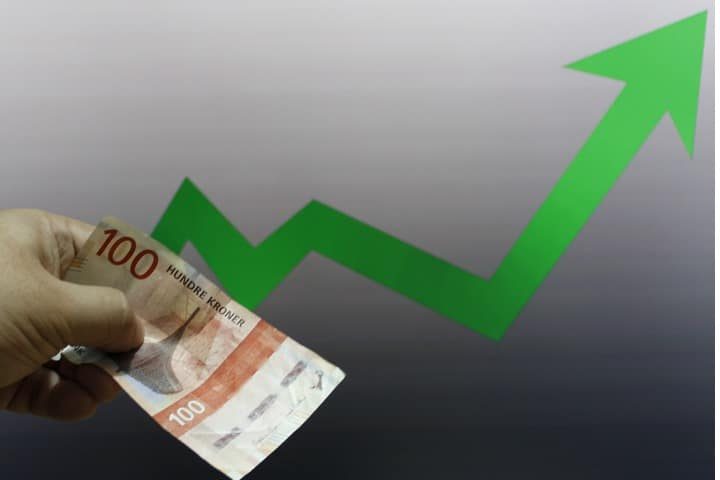
Norway’s exports reached a record in July, driven mainly by natural gas prices that have soared since Russia’s war with Ukraine. Higher fish and metals exports also contributed to Norway’s surge in exports.
The country’s statistics agency announced that Norwegian exports reached 229 billion kroner (approximately $24 billion U.S.) last month, 0.4% higher than the previous record set in March this year. Norway’s trade surplus of 153.2 billion kroner (approximately $15.8 billion U.S.) also was the highest on record.
With the war in Ukraine, the EU has approved bans on Russian coal and most oil to take effect later this year, but the EU chose to not include Russian natural gas because the 27-nation bloc depends on gas to power factories, generate electricity, and heat homes.
But with Russian President Vladimir Putin restricting gas exports to pressure the bloc into reducing its sanctions over the war in Ukraine, the EU is scrambling to fill gas storage ahead of the winter, when demand will increase.
The Washington Post reported:
Jon Olav Roerhus, senior adviser for external trade at Statistics Norway, said reductions in Russian gas deliveries to Europe through the Nord Stream 1 pipeline contributed to soaring gas prices last month, which were “the main reason for the exceptionally high export value we are now experiencing.”
At a one-day meeting of the five Nordic leaders in Oslo on Monday, Danish Prime Minister Mette Frederiksen said: “We must phase out Russian gas as soon as possible.” She said Europe is “facing a challenging fall.”
Norwegian Prime Minister Jonas Gahr Støre said the Nordic countries also should focus on renewable energies, including wind and solar.
“We all struggle with increased energy prices,” said Gahr Støre, whose country and Iceland are not EU members.
“As we enter the cold winter, our populations have to understand what is at stake,” Finnish Prime Minister Sanna Marin.
Norway is fortunate to have a vast amount of its electricity produced by hydropower that is still dominating the Norwegian power system. Hydropower accounted for 91.8 percent of their total electricity production, while thermal and wind power accounted for 1.7 and 6.4 percent respectively in 2020.
Having the luxury of hydropower meeting their electricity needs, Norway, western Europe’s largest oil and gas supplier, has adjusted its gas production to sell more gas for exports, instead of re-injecting it back into the ground to pump more oil.
Norway’s natural gas revenues were four times higher this year than for July 2021, while the volume of gas sold rose by 5.7% to 10.2 billion cubic meters, Norway’s statistics office said.
The EU’s dependence on and increasing need for importing natural gas is due to the horrible energy policies of their hubris-infected, green-energy politicians, who have led their citizens like lemmings to a most-likely cold winter instead of a utopian paradise.
Look to Germany, who reduced their seventeen nuclear power plants to just three plants as they aggressively sought to transition to wind and solar to meet their green energy goals. This transition to green that Germany began 30 years ago has not worked. In 2000, the country obtained 84 percent of its energy from fossil fuels. By 2019, it was 78 percent. As Vaclav Smil pointed out a couple of years ago, at this rate, Germany would still be deriving 70 percent of its energy from fossil fuels by the year 2050. Now, with the war in Ukraine causing Germany to move back to coal, it appears that fossil fuels will be their main source of power for some time to come.
And Germany is far from alone, as most of the other EU countries are on the same path to succumbing to the reality that green energy is nothing more than their governments’ acceptance of the Great Reset.
As for Norway’s newfound export prosperity, good for them — especially for showing Europe and the world that natural gas and oil are still greatly needed to keep the lights on and homes warm.




